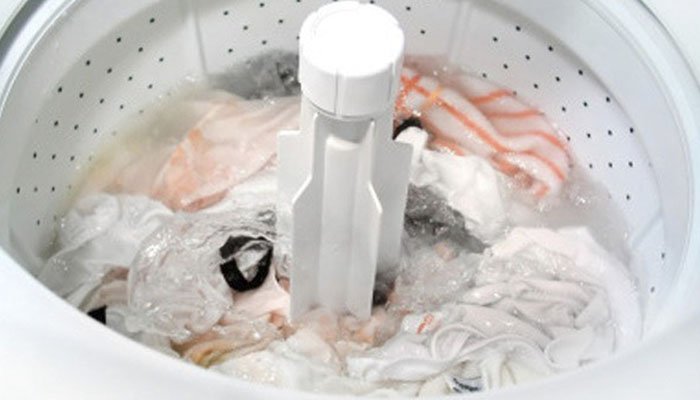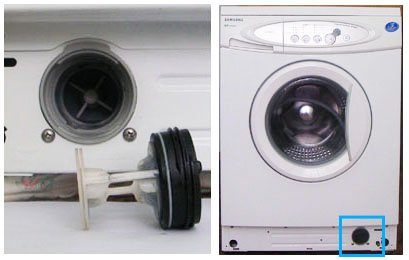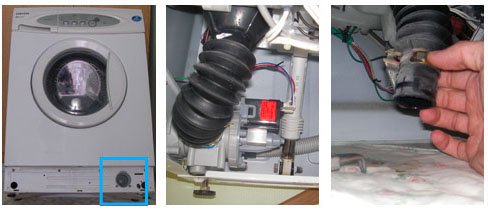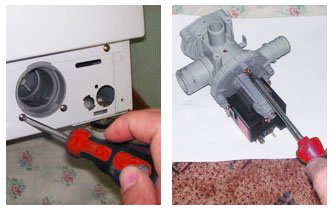
Your washer won’t drain? There are several reasons for this very common issue.
Symptoms:
The washer drains out the water, but does it very slowly, then goes dead.
The washing cycle breaks at a spin and drain cycle, and the water stops draining.
The washer does drain out the water, but not at each washing cycle.
The water is drained out only during the washing cycle, but not during the rinse cycle.
The washer goes dead after the water is drained out.
Explanations:
The drain pump filter is clogged.
The sump hose is clogged (the hose connecting tub with the pump).
There is an obstruction inside the pump, the impeller got jammed.
The pump failure.
The drain hose is clogged.
The interceptor or waste pipe is clogged.
How to fix it?
Unplug the washer
Turn off the power to the machine. Never start working until you unplug the washer.
Check the drain pump filter

The pump filter is located near the base, under the door (to the right side or to the left side). Before you unscrew the filter, place a small bowl next to the machine. Now open the small access door with a screwdriver or coin, then turn the drain pump filter counter clockwise, detach it and let the water pour into the bowl. If the filter is clogged, clean it out. Reinstall the filter and return the access door to its place.
The drain hose blockage

If you have removed the filter, but the water from the tub does not drain, it means that there may be a blockage in the sump hose. You can reach it by undoing the clip holding the sump hose in place. Now release an end of the hose and place it into the bowl so as to remove the water. Carefully check the hose for any foreign objects and remove them. Reverse the steps above and fit the pump and sump hose back on using the clip.
Impeller got jammed
If there are no problems with the drain pump filter and the sump hose, but the washing machine does not drain, you need to check whether the impeller (located just behind the filter) turns properly. Use a small screwdriver to turn the impeller: it should be reasonably free. Even a small foreign object (like a button or a hairpin) can lead to the impeller blockage.
The pump failure

Finally, it’s time to check the drain pump – this is the last step. Start the rinse/spin cycle on your washer and shine a torch into the hole. If you do not see any object that could have jammed the impeller, but the impeller does not turn, it means that the pump is broken and needs to be replaced. To do this, disconnect the whole drain unit from the washer, then disconnect the pump from the wires and the sump hose. All the washing machines manufacturers use standard pumps that can be purchased separately.
If you have performed all these steps, everything is working, and the impeller turns with the filter out, but the water still does not drain, there are two possible reasons. Either the pump has lost its power and now it cannot turn the impeller efficiently (cannot move water), or there is a blockage in the drain hose or waste pipe. In these cases the pump should be replaced, the drain hose or pipe should be cleaned.
The final check
Carefully inspect all the connections: clips, screws, wires. Turn on the washing machine and check whether every cycle runs smoothly. Turn it off and once more ensure the connections do no leak. If needed, work with the faulty connection until the leakage disappears.
